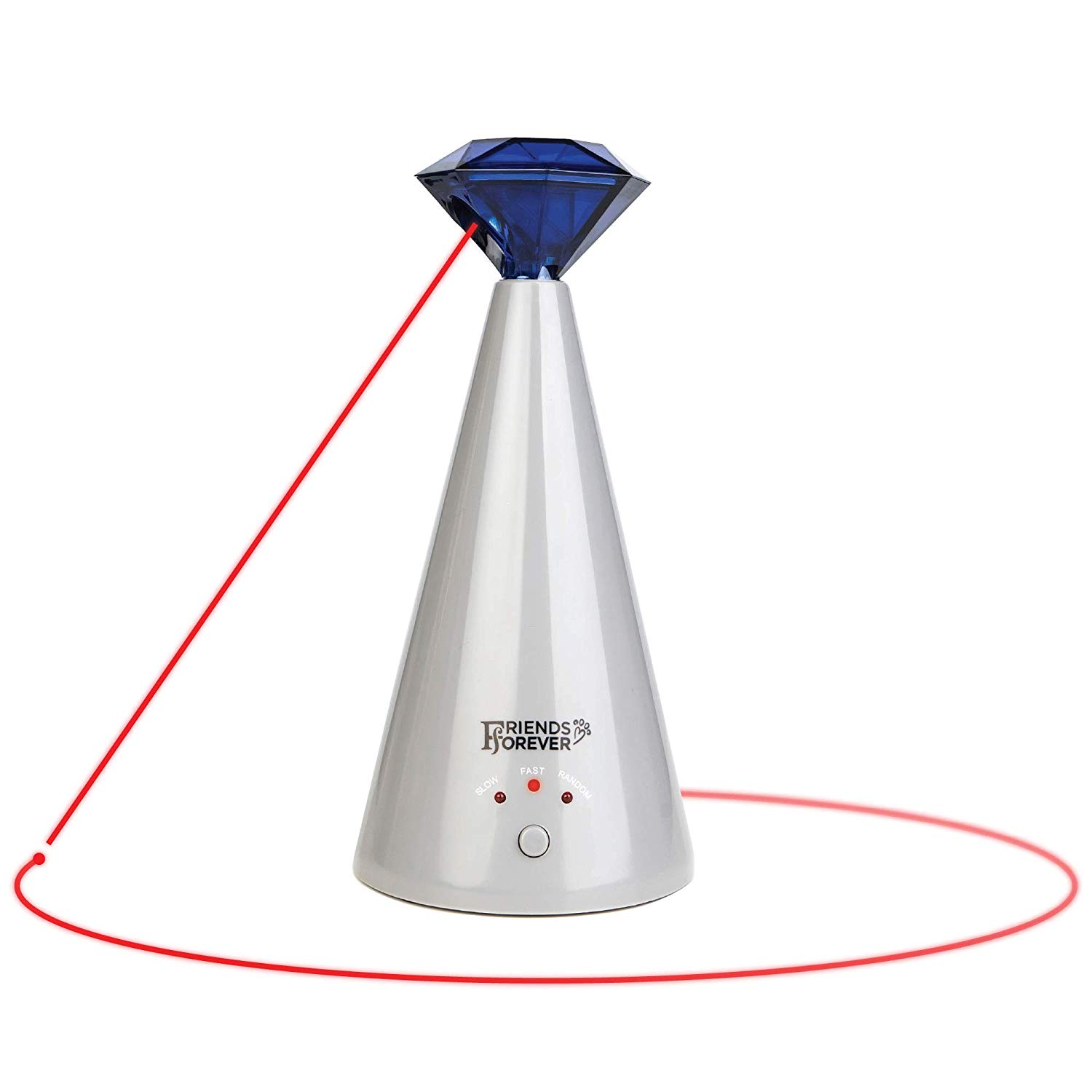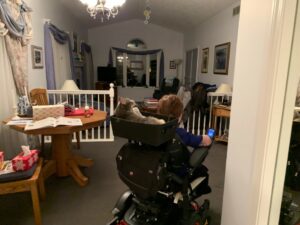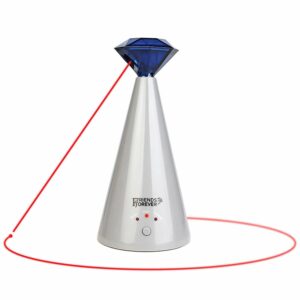AT for Caring for Our Furry Friends
Thursday, February 14, 2019

By Guest Blogger, RoAnne Chaney

I have always liked cats, my own and friends’ pets. Dogs are OK, but cats are my favorite fur babies. They are soft, cuddly, and usually, have unique character features. When I started using a wheelchair and my last cat died from illness causing me a lot of pain and grief, and as day-to-day tasks got more difficult to do, I decided to not have pets for a while. My husband and I agreed it would be better to use our energy for traveling and other entertainment for a while. He had lost a dog recently and found this hard to experience too.
My husband and I occasionally talked about getting a cat, but we were never ready, so years went by until late summer 2018 when I had an AFIB and two small strokes and was quite sick for a few months. One day my husband said I needed to get better, get out of the hospital, and come home. My friend said, “how about you agree to get a cat when she gets home.” Even though he knew he had been manipulated a bit, my husband agreed and we now have adopted Zinnia. She is a bit of a goofy diva, but cute.
 Some assistive pet care is not really AT, but making an accommodation. Initially, only my husband was feeding Zinnia which meant she went to him for attention and cuddles. We put her food dish on a table which is easier for me to reach and feed her (elevated food dishes are also available). I have exclusively fed her since and she has warmed up to me. She clearly wanted to ride on my power chair with me, but every place she tried to perch was vinyl, so she would slide off. My husband decided to attach a basket to the back of my chair where my headrest goes, but which I rarely use. He found the perfect size basket at Meijer for $7.50 and we lined it with a small, soft blanket. Zinnia has loved this basket – riding with me, sometimes taking naps in it and sometimes putting her head on my shoulder and purring in my ear. I’m also comfortable when she is in her basket with me because I don’t have to worry she will be “underfoot” which means she could get her paws or tail run over by a several-hundred-pound chair.
Some assistive pet care is not really AT, but making an accommodation. Initially, only my husband was feeding Zinnia which meant she went to him for attention and cuddles. We put her food dish on a table which is easier for me to reach and feed her (elevated food dishes are also available). I have exclusively fed her since and she has warmed up to me. She clearly wanted to ride on my power chair with me, but every place she tried to perch was vinyl, so she would slide off. My husband decided to attach a basket to the back of my chair where my headrest goes, but which I rarely use. He found the perfect size basket at Meijer for $7.50 and we lined it with a small, soft blanket. Zinnia has loved this basket – riding with me, sometimes taking naps in it and sometimes putting her head on my shoulder and purring in my ear. I’m also comfortable when she is in her basket with me because I don’t have to worry she will be “underfoot” which means she could get her paws or tail run over by a several-hundred-pound chair.
 For play, I tend to use long-handled toys, such as the cat dancer or feather wands, that don’t require long arm extension. There are also electronic, automatic toys that shoot laser beams, wiggle feathers, dart mice across the floor, and so much more.
For play, I tend to use long-handled toys, such as the cat dancer or feather wands, that don’t require long arm extension. There are also electronic, automatic toys that shoot laser beams, wiggle feathers, dart mice across the floor, and so much more.
For now, I am leaving the litter box duty to my husband. However, I have researched several self-cleaning litter boxes. Their effectiveness seems to depend on whether your cat will use them. Another option might be lightweight litter, or disposable litter box delivery services, to avoid having to deal with heavy large bags of litter.
There are many types of assistive technology to help care for our pets. For even more ideas, check out my colleague Laura’s blog: “Pawsatively” Helpful: AT for Dog Care, and our archived webinar “Devices to Help with Pet Care“
Zinnia is quite pleased with the AT we use. What assistive technology do you use to help care for your pet?

